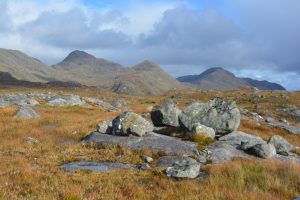The news that a pair of rare hen harriers have bred successfully and produced chicks in the high Grampians, is very welcome.
So many of our native birds seem to be disappearing too quickly these days without any apparent reason other than when man has interfered. It seems only yesterday one could drive through the glens and across the high moors and passes of Argyll and catch a glimpse of any number of male hen harriers flying, usually very low, gliding buoyantly with black tipped wings held in a shallow “V” emitting their high chattering “ke-ke-ke and long wailing “pee-e” calls.

One reason for their demise is, undoubtedly, loss of habitat through blanket afforestation encroaching on their traditional breeding and hunting grounds. If hen harriers are to make a comeback in Scotland, a great deal more thought needs to be put into the planning of forestry blocks.
Some years ago, the RSPB used to pay landowners a bounty for every pair of golden eagles which bred successfully on their property. In these enlightened times this should not be necessary but if it would help towards getting the hen harrier population back up to what it was 20 years ago, so be it.
Golden plovers and curlews, too, were common on the West Coast, but curlews have now almost gone from Morvern. Loch Aline and its hinterland used to be home to at least a dozen breeding pairs, now they are seldom seen or heard.
Likewise, the golden plover. Their sad, mournful calls on the high plateaux between Glencripesdale and Kinlochteacuis, Achranich and the Table of Lorn and the large knolls around Crosben in the Black Glen, heralded the spring, but this year their breeding grounds have been silent.
Records for the 1880s show they were common enough in Glen Sligachan and above Camusunary on Skye and around Lairg, but by the turn of the 20th century naturalists were beginning to complain of their unaccountable disappearance.
Osgood Hanbury Mackenzie (1842-1922), Highland landowner and the creator of the famous Inverewe garden near Poolewe in Wester Ross, writing in the early 1830s, said: “Such is the entire change in the habits of the golden plover, which is now a migrant only, or almost so, only a very few come to breed here, and leave for good in August, whereas they used to breed and remain even in the hardest winter and to be in hundreds.”
Despite his popularity today as a gardener and plantsman and the author of A Hundred Years in the Highlands, Mackenzie was a notorious slaughterer of wild birds but was in denial about the long-term effect of his sporting proclivities.
Likewise, Henry Davenport Graham, author of The Birds of Iona and Mull 1852-70. His book, printed in 1890, is a valuable record of the feathered inhabitants of the Inner Hebrides and their breeding habits.
Of the golden plover he wrote: “Remains with us all the year round, but in winter alone is ordinarily met with in small parties on the seashore.
“In more than ordinary hard frosts they assemble in very large flocks, and at such times are not only void of their usual shyness, but seem absolutely without consciousness of danger, and I have lain down close to a flock, stringing as many as possible at a shot, when they would run past the muzzle of the gun.”
He went on to say: “The sandy-grass-grown levels of the island of Tiree abound with golden plover in autumn and winter.”
Thankfully his readers were spared yet another graphic account of how he successfully blasted dozens of these lovely little birds and many other winged species, into kingdom come!
The Gaelic name for the golden plover is “feideag”, although in some parts of the Hebrides it is also called “fuisleach” or “peatag”, supposed to be from the Latin, “pluvia,” rain; original root “plu”, to swim – a wading bird.
It was said in days gone by that if heard at night, it meant the near approach of death, or some other evil which helped to keep inquisitive people away from secret stills.
In Aberdeen, among the farming community, the cry or the whistle, was translated into “plough weel (well), shaave (sow) weel, harrow weel”. It’s slowly-flapping flight is fast giving rise to a once familiar saying, “Cho luath ris na feadagan” – as swift as the plovers, or whistlers.
Golden plovers are round-headed, short-billed birds with long narrow, pointed wings. They have amazing powers of flight and are unlikely to be confused with any other moorland bird. The back and wings are mottled black and yellow, the tail is barred as is its stomach. Its overall length is around 11 inches and the wing-span 18 inches or so.
Golden plovers stay up on the moors from March until September, though the adults will often move down to the low ground rather earlier.
The golden plover is a wary bird, the ever-watchful male warning his mate of man’s approach long before she can be spotted amongst the vegetation of the moors. She rises quietly and runs some distance before taking flight.